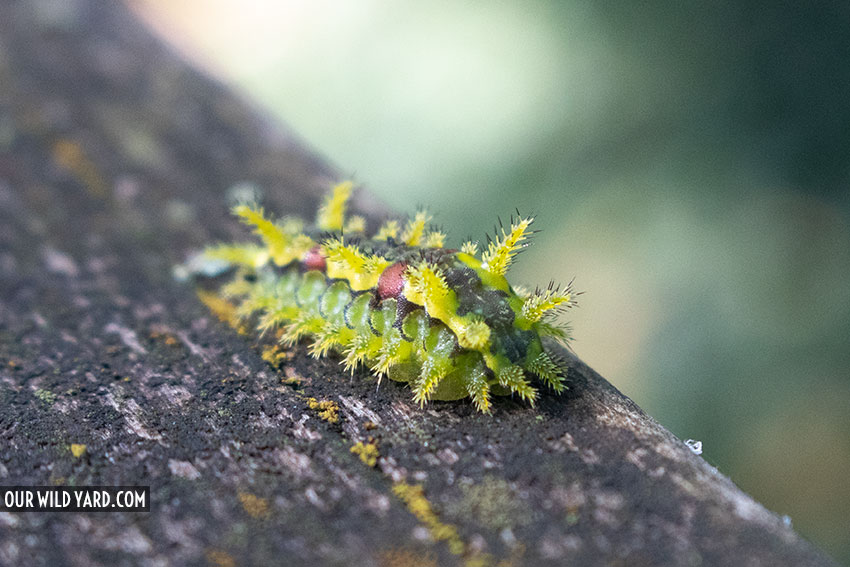Summer is the time of the year when butterflies and moths are everywhere in our yard. Which means it is time to search for cool caterpillars! Today I went outside to check on our native passion flower vine and I noticed someone on our deck rail I’d never seen before. It was our first Spiny Oak-slug Caterpillar (Euclea delphinii)!
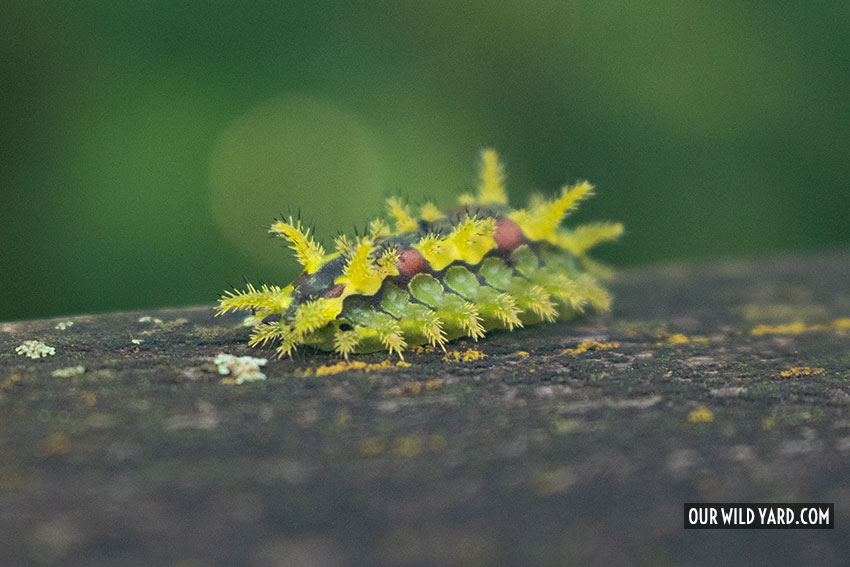
The Spiny Oak-slug is the larval form of a moth. The first thing you notice is their spines. Rule number one for caterpillars: if they have spines, do NOT touch them! These spines are venomous, producing symptoms that range from itchiness, to a burning sensation. Some people may show allergic reactions and medical assistance may be required. More on this later.
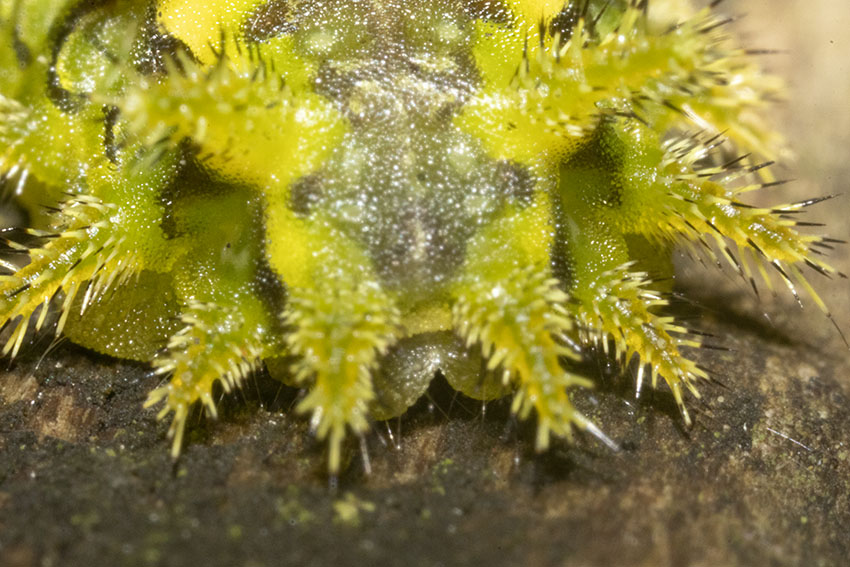
Before we figured out what it was, I said to Hal, “it kind of looks like a slug!” As the name implies, the Spiny oak-slug caterpillar, does somewhat resemble a slug, thanks to it’s flattened body and the undulating sort of way it moves.
As the name implies, they are a member of the slug caterpillars, just like this saddleback caterpillar we saw the other day.
These sluglike caterpillars are green, yellow, orange, and/or red. Their heads are really small and hard to see, we only saw our visitor’s head with the help of our macro lens.
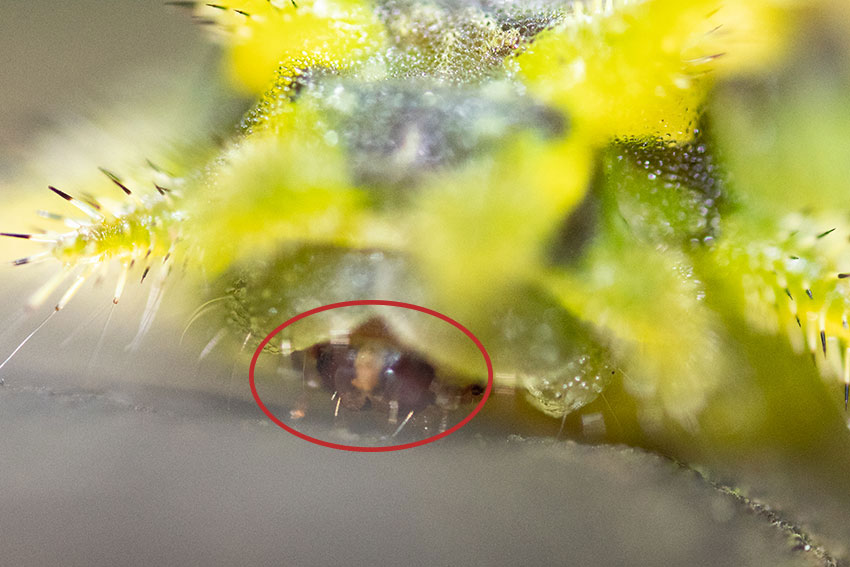
At the front, there are 3 pairs of large, hornlike spines with dark-tipped bristles, while at the rear, only 2 pairs are present. Additional clumps of spines run in rows along the back and sides. Some Spiny oak-slug caterpillar present 2 pairs of red or dark spots on the back, and 1 pair near the tail, just like our guy here!
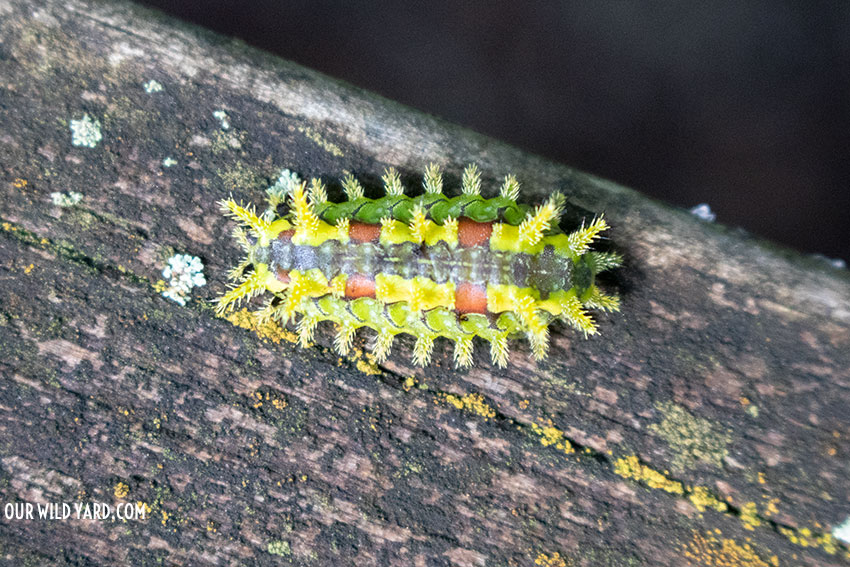
As we were taking photos of this incredible caterpillar, we noticed he was starting to move. While looking through our super macro lens we even managed to see some of their tiny suction type feet.
We decided it would be safer for the caterpillar and for us if we moved it off the handrail. These caterpillars feed on maple, oak, apples, willows, and other trees. We figured he had just fallen from our maple tree above, so I grabbed a piece of paper and managed to move it to a young oak. He disappeared within ten minutes.
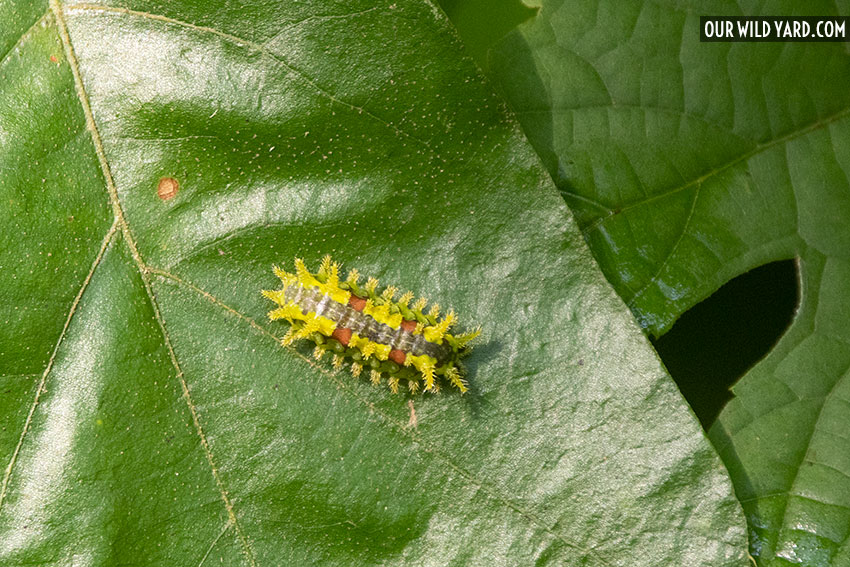
These are truly remarkable caterpillars. If you have the good luck of spotting one make sure to go find your macro lens (we use this one) because these creatures are amazing up close.
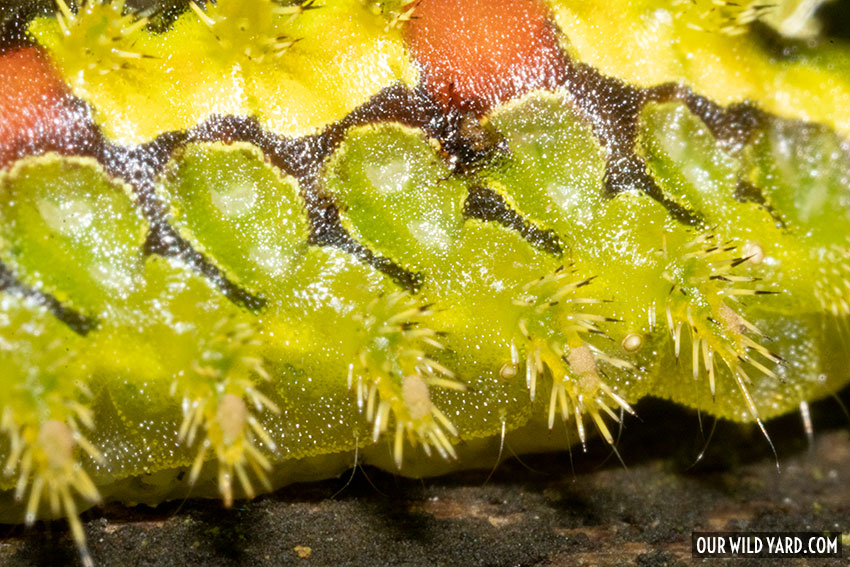
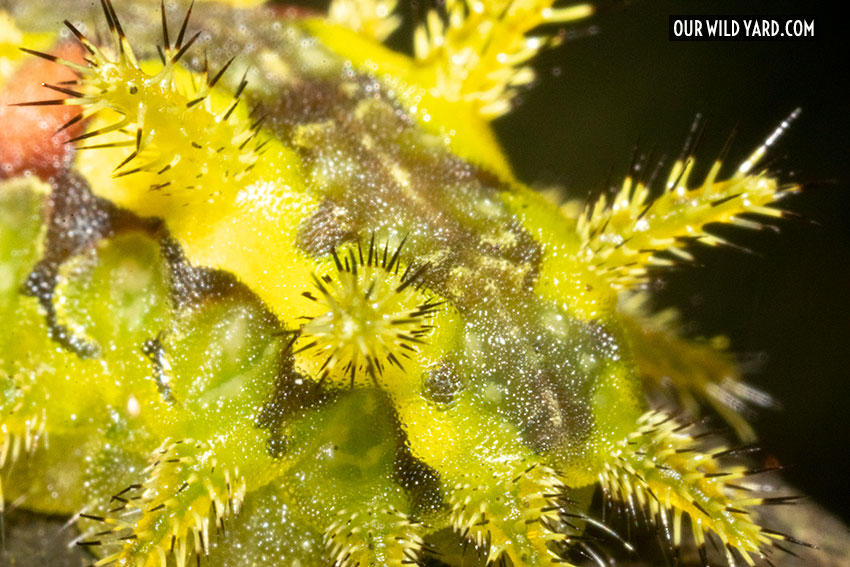

The spiny oak-slug moth
This native caterpillar will mature into a small moth, the Spiny Oak-slug Moth, with a wingspan of about ¾–1¼ inches.
It will have a chunky, fuzzy body with wide, rounded wings. The brownish wings often have a colorful patch that is half rusty-orange and half bright key-lime green with a white border.
*This article may contain affiliate links. We receive a small commission at no extra cost to you*
Recommended field guide
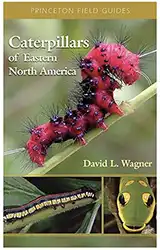
Caterpillars of Easters North America by Princeton Field Guides is a wonderful addition to a naturalist’s library. We use it all the time when we need to ID caterpillars.
Full-color photographs for easy identification. 512 pages.
What to do if you’ve been stung by a Spiny oak-slug caterpillar?
These caterpillars are venomous, which means that if you touch them you’ll get a reaction from it. First rule is to NOT touch it! But if by accident you touch this venomous caterpillar, you’ll get symptoms. These could range from just itchiness and redness, to a burning sensation that lasts about 1-2 days. A hydrocortisone cream will help alleviate these symptoms.
Be aware that some people may show a stronger allergic reaction and medical assistance may required.
